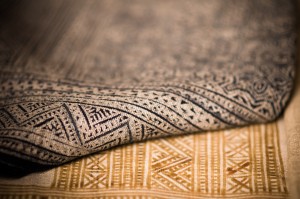Best Fabrics for Each Season

Nowadays, there is a lot of talk about watching what’s on your food labels to ensure you’re not eating anything that’s artificial or bad for you. However, this is also very important when buying clothes. Certain types of fabrics are suitable for different types of weather and circumstances, while some are simply not good for you at all. Here is a simple guide to choosing the material of your clothing for different times of the year.
When It Is Hot
As the weather heats up, everybody starts to sweat; it’s normal and happens all the time. Yet, those sweat stains and the uncomfortable stickiness that comes with it is simply unbearable. During the hot and humid summer days you’ll want to wear clothing that breathes easily. It’s better to avoid synthetic fibers such as polyester and polyester blends, since those tend to be water repellant and add to the sweaty discomfort during the day.
Silk works the same way—despite its soft and smooth nature, it tends to repel water and create a moist and gross feeling. It’s also unfortunately great at holding onto body odor and leaving sweat stains easily. Another material to avoid is nylon, which is completely synthetic. It makes your skin prone to chafing when you sweat, which is bound to happen in the summer days. That, along with its water resistant nature, makes it one of the top fabrics to avoid in the heat.
The best kinds of fabrics are cool and water absorbent, so shirts made of cotton or linen are usually your best bets. They’re thin and breathe easily, which makes the humidity less uncomfortable. There’s a reason why the ancient Egyptians wore linen tunics to beat the heat! The natural materials tend to be better for controlling your temperature and are much better for your skin. The manufacturing of certain synthetic fabrics includes lots of toxins and chemicals that can potentially irritate your skin. Those are best to be avoided, especially when you’re sweating and uncomfortable already.
Lastly, during sunny and hot months, it’s better to opt for the lighter colored shirts. Dark colors tend to absorb and trap heat, while lighter ones like white and beige reflect it. Your choice in clothing is critical to your comfort in the heat!
When It Is Cold
During the winter you want materials that do just the opposite—hold on to all the heat you can get and keep the moisture out. Now you’ll want to avoid thin materials like cotton and linen that let the cold in easily. Instead, you’ll want to go for clothing made of materials like wool, which is an excellent insulator. It’s thick and holds on to your heat while absorbing all the moisture so you don’t get cold. Wool socks, sweaters, and pants are a must-have in many of the colder regions.
During the colder months, the synthetic, water resistant materials are preferred. They are usually great insulators, and block out the wind and rain. Polyester is a good example, and many sweatshirts and other clothing have some of it in their fabric. The outermost layer that you wear can be a greater percentage of polyester, as it does not directly contact your skin and irritate it but keeps out the cold.
Other synthetic materials like fleece have the same benefits. Fleece is known to be very soft and comfortable, and also dries quickly, which makes it great for outdoor activities where you might sweat. Staying wet or sweaty in the cold is never a good idea. Fleece is usually much lighter than materials such as wool, but still a great way to stay warm in the winter. However, it tends to breathe easily, so it’s not the best at blocking out the wind. It can be worn as a base layer, and a more wind-resistant material like nylon can be worn on top. The key to staying warm is obviously layering!
These are just some key tips to keep in mind when choosing clothes throughout the year. What you wear is more important to your comfort and your health than you think!


